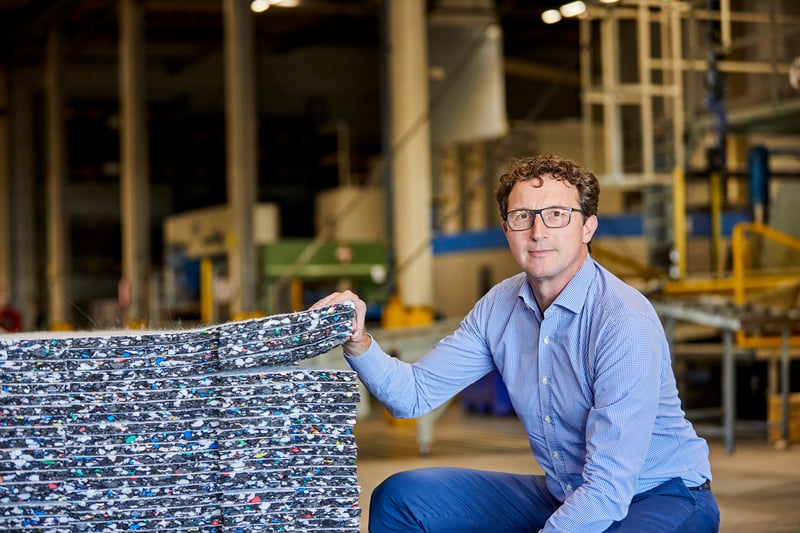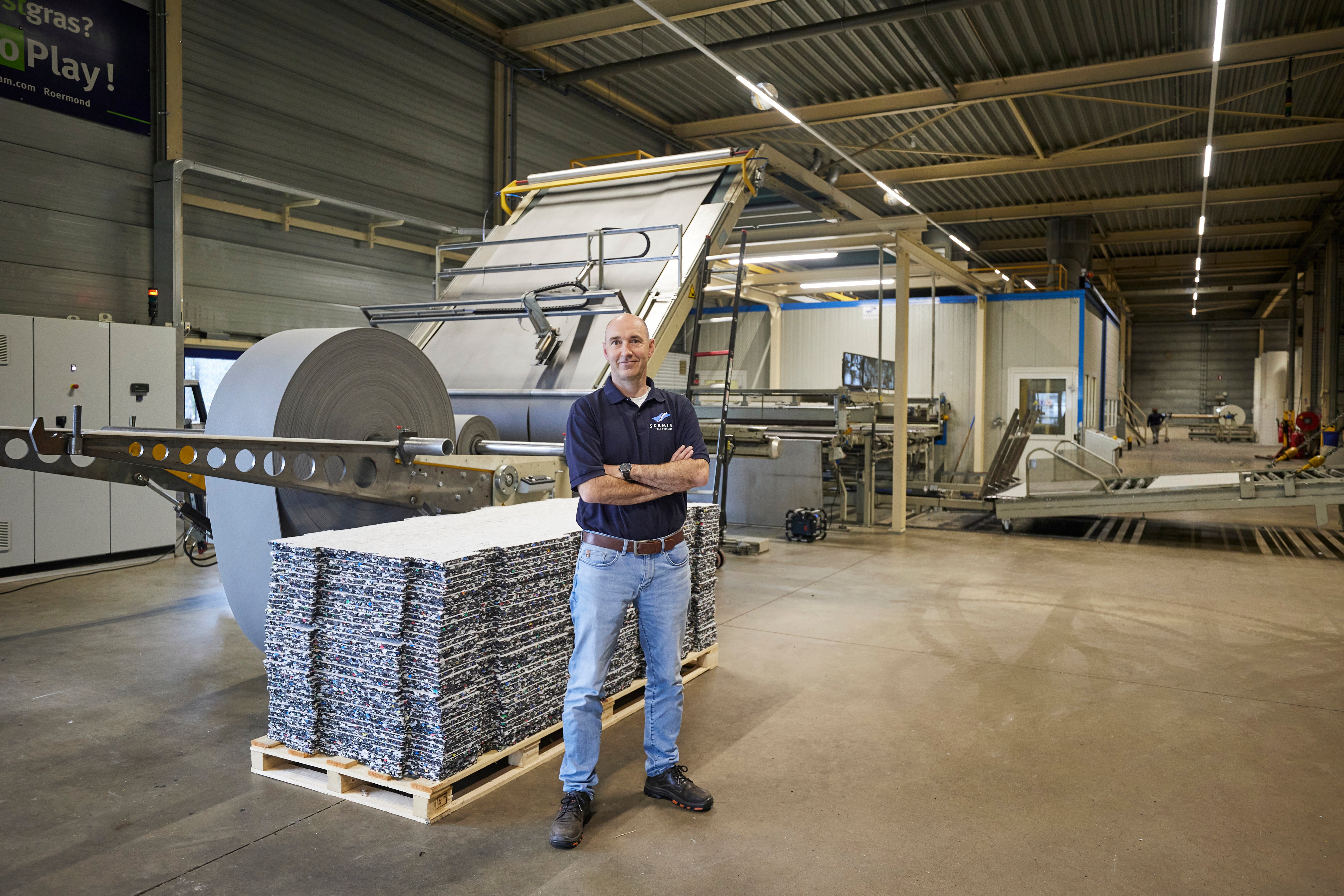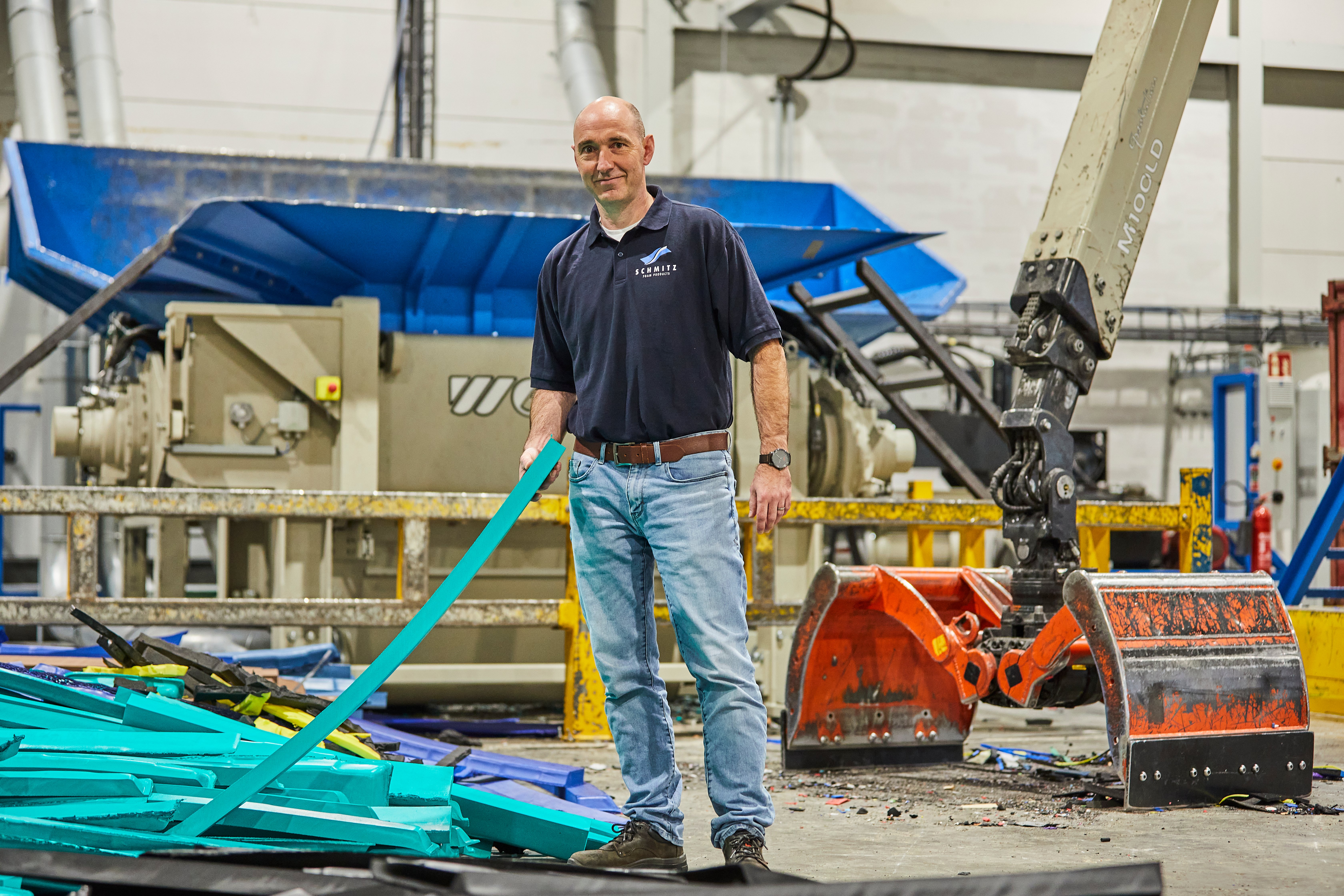
Shock pads are becoming increasingly important in artificial turf systems. This is largely due to the trend towards using less or non performance infill or alternative types of infill. Shock pad manufacturer Schmitz Foam Products has adapted its shock pad for use on non-infill pitches.
Export Manager Ron Lokhorst says: “Non-infill systems only succeed when combined with shock pads that create a natural grass feel for the player.”
Schmitz Foam Products is world renowned in the world of sports pitches for its widely used ProPlay-Sport shock pad made of recycled polyethylene foam. Since 2009, the company has brought to market a complete range of shock pads for different types of artificial grass. With years of knowledge and experience in the artificial turf industry and a passion for foam, Schmitz Foam Products is always on the lookout for opportunities to further develop the ProPlay shock pad – including for specific applications such as non-infill pitches.
A custom-made solution
In 2021, Schmitz Foam Products created the ProPlay-Sport Balance to meet the Dutch soccer association KNVB's standards for artifical pitches. At the time, the challenge was to reduce shock absorption without the increasing energy restitution. These two factos negatively influence one another and are also affected by the infill used. "Fortunately, Schmitz Foam Products' huge amount of knowledge and product experience enabled us to develop a custom-made solution, explains Export Manager Ron Lokhorst.
"The reduced use of performance infill had already made the shock pad more important. But when there's no performance infill at all and all that's left is the sand layer used for stability, the shock pad is essential. After all, it has to take on the functionality of the performance infill."
Area elasticity

Technical Director Ron Moors was heavily involved in the development of the ProPlay-Sport20 – the most popular product in the ProPlay range – which is used in 3G artificial turf systems worldwide. “When we were updating the ProPlay-Sport20 in 2019, we adjusted its elastic behaviour through which we reached an even better absorption of low and high impacts. In effect, we made the shock pad more “area-elastic”, which benefits the performance of artificial turf systems that use infill – it provides lower energy restitution and a higher Critical Fall Height.”
The concept also served as the foundation for the development of ProPlay shock pads for non-infill systems. Moors continues: “We can see there’s a market trend towards systems without performance infill or that use non-elastic infill. Systems like that require the shock pad to absorb any impact, whereas a layer of sand stabilises the shockpad. So the shock pad needs to be soft enough to keep the system somewhat point-elastic while also preventing that the impact goes through the shockpad towards the sub-base. The combination of low density and ProPlay’s characteristic thickness is an ideal solution.”
The ProPlay-Sport23/150 by Schmitz Foam Products is a shock pad developed specifically for sand-filled artificial grass systems without performance infill.
Looking forward
Moors anticipates that the market will eventually be taken over by another non-infill system: “In time, we will see the development of artificial turf carpets that don’t require any infill for optimal play performance. Systems like this – likely the next generation of field design- – have a construction more similar to a natural grass pitch. The artificial grass in these systems contains a full root zone, which provides the needed impact attenuation in and of itself.
This attribute, however, is very point-elastic and will need to be supplemented by a stable shock pad. The shock pad is needed to ensure the right balance in the system’s elastic properties.” Schmitz Foam Products offers the ProPlay-Sport15/215 for these systems.
 “This product has an exceptionally high density of 215 kg/m³, which provides a stable foundation for this type of artificial grass. The shock pad provides impact attenuation without unnecessary vertical deformation and prevents that the impact goes through the shockpad towards the sub-base. Together with the artificial grass carpet, it absorbs impact the same way that natural grass does.”
“This product has an exceptionally high density of 215 kg/m³, which provides a stable foundation for this type of artificial grass. The shock pad provides impact attenuation without unnecessary vertical deformation and prevents that the impact goes through the shockpad towards the sub-base. Together with the artificial grass carpet, it absorbs impact the same way that natural grass does.”
The ProPlay-Sport23/150 shock pad was first used in 2021 on the pilot non-infill pitch with Fieldturf Ultra360 artificial grass at VVJ Utrecht. It was also used in the construction of two pitches at RKVV Emplina in s’-Hertogenbosch in April 2022.
Opportunities
Lokhorst says that this new role for shock pads also creates new opportunities. “As shock pad manufacturers, the ball is ever more in our court when it comes to shock absorption and energy restitution. That means we can make artificial turf systems even more like real grass. Non-infill systems will separate the wheat from the chaff in the shock pad industry,” predicts Lokhorst. “Non-infill systems only succeed when combined with shock pads that create a natural experience for the player. Of course, it takes some getting used to. Just as athletes once needed to adapt to artificial grass, playing on a non-infill field is different to playing on a traditional pitch. With the ProPlay-Sport23/150 shock pad, which is designed specifically for non-infill systems, Schmitz Foam Products is already prepared for that shift."
Read more: